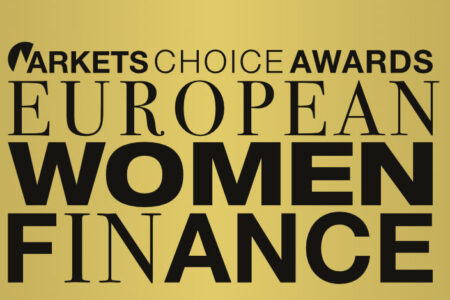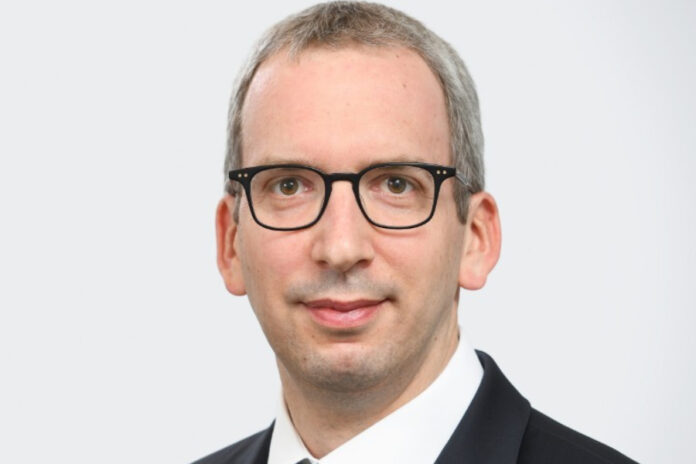As an emerging market, Latin America has often lagged behind its competitors somewhat. A lack of familiarity with the region, partnered with the high-touch trading practices that are de rigueur in many countries, contribute to the fact that investors tend to favour Southeast Asia in their emerging markets portfolios. But could that be changing?
Although it may not yet have the reputation of fellow emerging markets, interest in the LatAm region is growing. “When Milei was elected in Argentina, there was a large increase in interest in Argentinian American depository receipts due to hopes of the new president tackling hyperinflation and stabilising the economy,” recalls Hayes Varey, Americas trader at Redwheel. More people were asking questions, and traffic and flows were up. Accessing the market was challenging for many, though, meaning that the country was not necessarily able to capitalise on its visibility as much as it could have done. This pattern is one that will be replicated across the region if serious steps are not taken to modernise markets.
Liquidity
Liquidity is a buzzword across the industry, regardless of geographical location. The global trend of the flight to liquidity is particularly complex for smaller and non-traditional markets though, according to Juan Pablo Córdoba, CEO of nuam exchange. Following the 2008 Financial Crisis, he explains, liquidity has been concentrated in just a few places around the world – London, New York and Singapore, for example. Without the level of liquidity or access to market participants that major markets benefit from, competing in the global arena is challenging for those outside of that group.

Countries in Latin America must continue to push for the development of their own capital markets, Córdoba insists, but acknowledges that this is a complex process. While capital markets in New York or London don’t prioritise LatAm, countries in the region “don’t have sufficient economies of scale to be competitive on a global level”.
Although it’s often possible to get higher valuations by listing on US or other exchanges, Gustavo Stenzel, executive vice president and director of Latin America strategy at Franklin Templeton’s emerging markets equity division, notes an uptick in the number of companies opting for local markets. “That’s the biggest change for the dynamics of the market,” he says, and has come alongside considerable growth in the number of players in major regional markets like Brazil and Mexico and “democratisation of access to equities and debt markets, which has been incredible”.
That being said, a large number of LatAm companies choose to list on US or other exchanges rather than their home markets, whether because they can receive higher valuations, as Stenzel suggests, or because listing on local markets will give them little to no exposure.

So the options for many are to go to operate in larger markets that aren’t particularly supportive, or to stay local but risk being too small to stand their ground on the world stage.
At least, that’s what the options have been until now. The launch of nuam exchange offers an alternative, combining the Colombian, Peruvian and Chilean stock exchanges into a holding company with the goal of establishing a single market. “We are trying to build scale not necessarily growing by the individual markets independently, but by joining forces,” Córdoba explains, “creating visibility and the efficiencies that come with scale so that we can compete on a global level.”
Another attempt to address the liquidity problem has come from the Brazilian exchange, B3, which is creating dark pools and attempting to unblock prints. However at the moment, according to Varey, there’s a major barrier. “Unfortunately, there’s no aggregated ticker,” he explains. In Europe, market participants can look at the European ticker to see an aggregated result and gain a more comprehensive understanding of a stock’s performance. In Brazil, however, dark pools are using separate tickers – preventing a clear picture of volumes.
Varey goes on to suggest that “there are further improvements B3 can make”. While many agree that Brazil would benefit from greater competition, B3 has bought out those developing dark pools and internal aggregators that are in line with their objectives – and then hasn’t taken those projects forward. As a result, the initiative has not been as successful as it might be.
High-touch trading
Latin America is a big emerging market with a lot of opportunity, but there are a number of things currently holding it back from overtaking the competition. Will Tarr, Chief Operations Officer for Emerging Markets at Tradeweb, believes that mindsets are an issue; local markets have ingrained behaviours, and moving from high-touch voice execution to low-touch electronic trading is an evolution, he says. A greater electronic approach requires a big shift in behaviour that can be hard to overcome.

“Overcoming that behavioural change is a very big challenge”, Tarr says, advocating for electronic trading and education around the benefits of these systems to give markets a reason to change.
This isn’t a view held by others operating in the markets. Rather than attitudes, the most prevalent issue for many is that of scale. Many of the economies in the region’s countries are simply too small for there to be a viable case for modernising markets.
“The business economics have not been there to automate many processes,” says Córdoba. “There aren’t as many trades or as many investment opportunities to warrant [traders’] effort to connect automatically to the venue.” That doesn’t mean that the ability is not there – it is. “As exchanges, we are algorithm and STP-ready to connect to people,” Córdoba confirms. “Our trading engines are fully automated, we can provide FIX connectivity and other types of communications protocols, and our data dissemination can be broadcast in many different formats, so that investors around the world can consume that information,” he explains, but as of yet the demand just hasn’t emerged.
Varey gives some explanation to this unwillingness to modernise, stating that at Redwheel he only uses electronic trading in the region for block crosses in Liquidnet (“which don’t happen very often”) or for pure fund flow, in situations “where volume is not impactful”.
Even when electronic trading is a feasible option, Varey explains that the market impact can be considerable. “In Brazil there is a high frequency hedge trading presence, so we have to be selective with electronic offerings to minimise signalling.”
Wary of sounding “like a dinosaur”, Varey clarifies that he is not against electronic trading in principle – or even in practice. But efforts to date in the LatAm region have been ultimately disappointing, something proven by the lack of uptake from global investors.
“If they could get other markets in LatAm to be able to be freely traded outside of their own exchanges, i.e. where they could happily trade on an Instinet block cross or a Liquidnet block trading basis, that would be absolutely ideal,” Varey assures. “I would love that.” But according to him, those systems aren’t available yet. Current methods, using a percentage of volume, or someone else’s liquidity? “I just don’t think it would work well enough,” he states.
Regulatory change
As with any attempts to change how a market operates, having regulators on board is essential. Córdoba recounts the fairly onerous processes that had to be endured for nuam to be developed; bringing together the exchanges of three countries meant that each jurisdiction’s regulator needed to approve the eligibility of the other two CCPs for the interoperability agreement, and the same rules needed to be approved in all three countries to establish a consistent rulebook.
Luckily, “all of the changes that we are requesting from regulators do not need legal changes”, he shared. “It’s all in the realm of our existing regulators, and they have the authority to change those rules.”
Instability
While regulators undoubtedly have a major role to play, some suggest that it’s just as much the responsibility of governments to push for the modernisation of LatAm markets – a particularly prescient issue this year.
In addition to the decisions of politicians currently in office, 2024 is a particularly active year for elections in the LatAm region and beyond. Looking north, the US presidential election is perhaps the most carefully monitored of the bunch, and will doubtless have an impact on both global and local markets. Varey suggests that this could work to LatAm economies’ advantage; “if you’ve got instability in the US, there’s a good chance that people will start looking elsewhere”. But, he clarifies, LatAm needs to show signs of stability before it becomes a more popular alternative.
At the moment “there are pockets of instability,” Varey says, bringing attention to presidential interference in CEO selection for private companies in Brazil. The fraying of barriers between market and state could have a widespread impact on willingness to invest in the region; if investors don’t have confidence in the integrity of one the region’s largest and most accessible economies, then it may be even more difficult for smaller markets to stay attractive.
Elections have the potential to increase volatility, which has its pros and cons for traders, and political changes can, and do, have considerable impacts on financial policies. However Kerim Acanal, global head of emerging markets at Tradeweb, suggests that these consequences won’t be felt immediately. Material regulatory changes take a long time to be implemented, he explains. As a result, even when political standings are wobbly it’s unlikely that markets will be caught unawares.
“One of the things that’s encouraging in the markets that we’re operating in is that there is an inherent desire from central banks to support electronic trading,” Tarr notes. After all, the technology helps to encourage greater transparency and potentially enables more activity in capital markets. In most cases, the need and desire for these improvements transcends political upheaval; “whatever the regime is, it’s net beneficial.”
International flows
“If you look at the distribution of global flows into emerging markets over the last 10 years, most of it is going to Southeast Asia,” affirms Córdoba. Although it continues to grow in absolute terms, Latin America “has been reducing its participation in global flows in relative terms” over the decade.
Now, flows seem to be going up, but Varey warns that the region needs to demonstrate greater stability in order to capitalise on increased interest. “Otherwise,” he says, “the money could flow to other regions.” Asia remains a popular choice for investors, but Varey affirms that “it wouldn’t take much for LatAm to really catch people’s eye” and overtake other emerging markets. “In general,” he stated, “I’d be more positive on LatAm than I would be on the developed world”.
It’s a bold statement, but not necessarily an unfounded one. Innovative projects and the overall global landscape have the potential to coalesce and bring Latin America to the forefront of the emerging markets bracket. Whether the region will be ready to meet demand, though, remains to be seen.
©Markets Media Europe 2024
TOP OF PAGE 
















